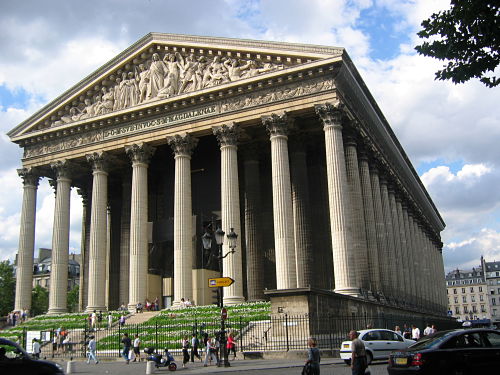Neoclassical Architecture – Beginnings, Evolution and Characteristics
Contents
What is Neoclassical Architecture?
Within neoclassical art we find several disciplines among which neoclassical architecture and sculpture stand out (although there were other very important disciplines as well, such as music or painting). Neoclassical art is one of the most outstanding artistic styles in the history of art, together with baroque art, gothic art and classical art, among others. Certainly, when we talk about the history of art we can observe thousands of types of art that have been very important and that today are still famous for their works.
What does Neoclassical Architecture consist of?
Neoclassical architecture, as we have said before, is a very important discipline of neoclassical art that emerged in the middle of the 18th century. This architecture emerged as an opposition to the baroque architecture, little by little it could be observed that this architecture took importance and lasted approximately until the 19th century. In the 19th century neoclassical architecture coexisted with other architectural styles such as eclecticism and historicist architecture, and also coincided with romantic art. Romantic art aesthetically influenced neoclassical art and thanks to this in various artistic works can be seen a certain spirit and a great expressiveness through simplicity and clarity.
Within this architecture, artists sought a more scientific nature of artistic disciplines and it is for this reason that artists had to be technicians instead of inventors and imitators instead of creators. Because of this, neoclassical art came to be considered quite progressive.

Neoclassical architecture in different countries
There are several countries in which neoclassical architecture stood out in different and diverse countries. These countries are:
France
In France it is mainly used the sober bases, a clear example would be that of the Place de Concorde (in Paris) built in the middle of the XVIII century. In this century an atmosphere of renovation was observed and therefore several theaters were built in a large part of France. If we talk about religious constructions, one of the first appearances was in reaction against Rococo art.
Germany
In Germany the Greco-Roman styles resulted in a monumental architecture that reflects a clear example that was frequently used was the classical temple that gave a new sense in society.
United Kingdom
In the United Kingdom, the Adam brothers created a new model of interior decoration whose main objectives were archaeology. One of the most outstanding and famous works is Osterley Park in which you can see an Etruscan area and a classical hall at the entrance. This work was carried out between 1775 and 1780.
Italy
Italian artists preferred to redo their old works, the renovation began in the late eighteenth century early nineteenth century. One of the most representative works of this recreation was the Pantheon of Agrippa (located in Rome) and can also be seen in other temples such as the Church of the Gran Madre di Dio (in Turin) and the Basilica of San Francesco di Paola (in Naples).
Spain
In Spain the most lasting style was the baroque that lasted from the XVII century to the XVIII century, thanks to its duration we can observe different religious buildings, schools, palaces and residences. With the appearance of neoclassical art, in architecture a great change and a great contrast between baroque architecture and neoclassical architecture could be observed, since both architectural styles belonged to different worlds. However, it was not until the eighteenth century where both the style and neoclassical architecture had its greatest flowering and soon after in Madrid began to build several buildings very prominent today.
